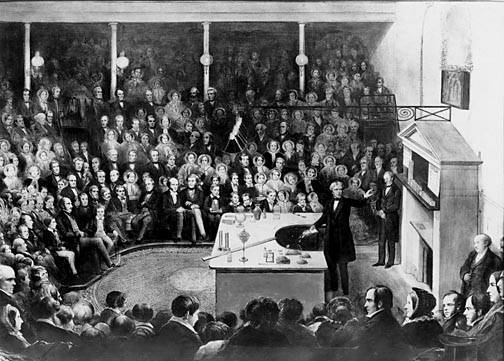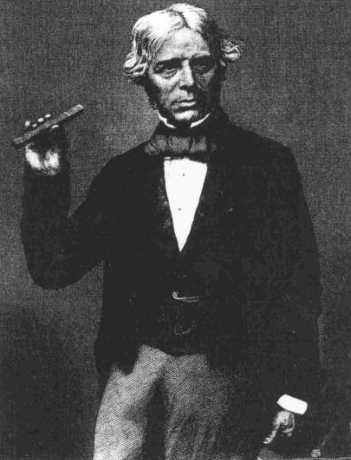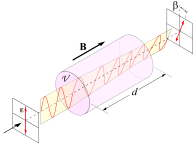The unrehearsed lecture that changed the physics of light
We now refer to light as the form electromagnetic radiation to which the human eye is sensitive and on which our visual awareness of the universe and its contents relies. If we want to go a step forward we could say that its macroscopic behaviour is best explained by a set of differential equations proposed by James Clerk Maxwell in 1864 that describe the space and time dependence of the electromagnetic field. But all the basic concepts were crafted by someone who had no idea of advanced mathematics: Michael Faraday.

On 11th April, 1846, the distinguished physicist Charles Wheatstone was scheduled to give a lecture at the Royal Institution in London. Michael Faraday was to introduce Wheatstone to the audience. At the last minute, just as Faraday and Wheatstone were about to enter the lecture hall, Wheatstone got stage fright, turned around, and ran out into the street. Faraday had to improvise and give a lecture himself. Normally, Faraday discussed in public only his actual experiments. But on this occasion he revealed certain speculations which, as he later admitted, he would never have made public had he not suddenly been forced to speak for an hour—although these speculations soon changed physics.
Faraday’s speculations dealt with the nature of light. Faraday, like Oersted before him, believed that all the forces of nature are somehow connected. Electricity and magnetism, for example, could not be separate forces that just happen to exist in the same universe. Rather, they must be different forms of one basic phenomenon. This belief paralleled that of Immanuel Kant, Friedrich Wilhelm Joseph von Schelling, and other German nature philosophers at the beginning of the nineteenth century. It had inspired Oersted to search in the laboratory for a connection between electricity and magnetism. Eventually he found such a connection in his discovery that an electric current in a conductor can turn a nearby magnet.

Faraday, too, had been guided by a belief in the unity of natural forces. Could light be another form of this basic “force”? Or rather, to use more modern terms, is light a form of energy? If so, scientists should be able to demonstrate experimentally its connection with other forms of energy such as electricity and magnetism. Faraday did succeed in doing just this. In 1845, he showed that light travelling through heavy glass had its plane of polarization rotated by a magnetic field applied to the glass.

Having shown a definite connection between light and magnetism, Faraday could not resist going one step further in his unrehearsed lecture the following year, revealing thoughts he had held privately. Perhaps, he suggested, light itself is a vibration of magnetic lines of force. Suppose, for example, that two magnetized or charged objects are connected by a magnetic or electric line of force. If one of them moved, Faraday reasoned, a disturbance would be transmitted along the line of force. Furthermore, if light waves were vibrations of lines of force, then a hypothetical elastic substance such as “ether” would not be needed in order to explain the propagation of light. The concept of the ether, one that would permeate physics till the first years of the 20th century, could be replaced if it could be shown that lines of force themselves have the elastic properties needed for wave transmission.
Faraday could not make his idea more precise. He lacked the mathematical skill needed to prove that waves could propagate along lines of electric or magnetic force. Other physicists in Britain and the rest of Europe might have been able to develop a mathematical theory of electromagnetic waves. But at the time these scientists either did not understand Faraday’s concept of lines of force or did not consider them a good basis for a mathematical theory. Ten years passed before Maxwell saw the value of the idea of lines of force and started using mathematics to express some of Faraday’s revolutionary concepts. Some others were a bit too much for Maxwell, though: he still believed that light and electricity must propagate through an ether.
References:
Asimov, I. (1993) New Guide To Science Penguin Press Science
Cassidy, D. et al (2002) Understanding Physics Springer Verlag New York
Author: César Tomé López is a science writer and the editor of Mapping Ignorance.